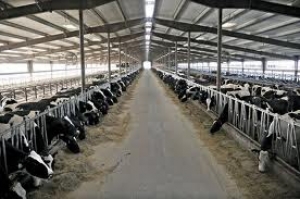Dairy farming

Researchers at the University of Leeds have been studying an enzyme - called 3D - which plays a vital role in the replication of the virus behind the disease. They have found that this enzyme forms fibrous structures (or fibrils) during the replication process. What's more, they have found a molecule which can prevent these fibrils forming.
The project was funded by the Biotechnology and Biological Sciences Research Council (BBSRC) and its findings have been published by the Journal of Virology.
"It's too much of a jump to say that we've found a potential drug target for treatment of foot-and-mouth disease because there's still such a lot we don't know," says Dr Nicola Stonehouse of the University of Leeds' Faculty of Biological Sciences. "However, we do think these findings are significant and provide us with a new avenue for exploration."
Foot-and-mouth is a one of the most readily transmissible diseases known to man, but the mechanisms by which it infects animals are not well understood. The virus responsible for the disease is able to reproduce very quickly, enabling it to cause widespread devastation in a short space of time. The 2001 outbreak in the UK resulted in the deaths of around seven million sheep and cattle at an extremely high cost to the British agricultural sector. Another, more contained outbreak, occurred in 2007.
In laboratory experiments, the research team were able to see that the 3D enzyme forms fibrils when it is copying genetic information it requires to replicate. The implications of these fibrils are not yet fully understood, but it is thought they may play an important role in the reproduction process. If this is the case, having already found a molecule to block the fibril formation could be significant.
"The next stage of our research will be to investigate these fibrils further, to look at their structure and purpose," says PhD student Kris Holmes, who has been working on the project.
Because FMD is classed as a dangerous pathogen, only one laboratory in the UK - the Institute for Animal Health at Pirbright, in Surrey - is licensed to work with the actual virus. In this research, the Leeds team used a simple, non-harmful model of the virus.






















